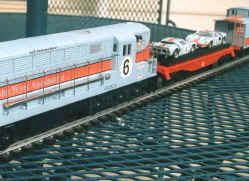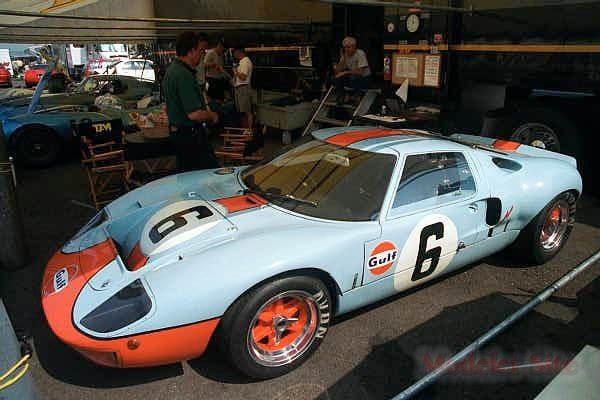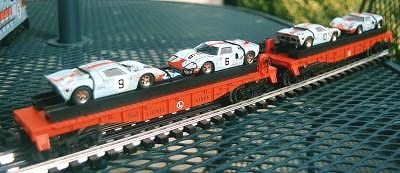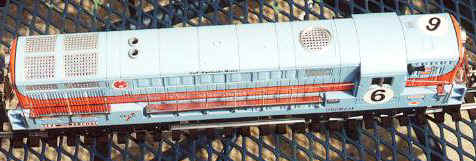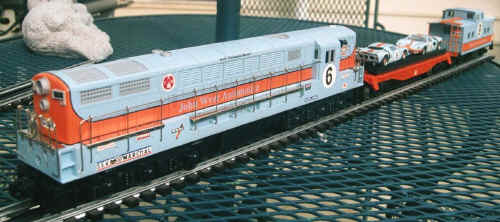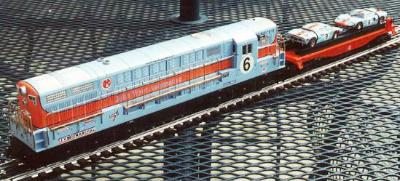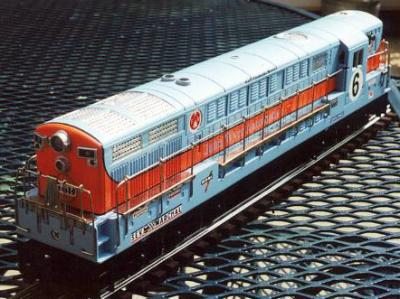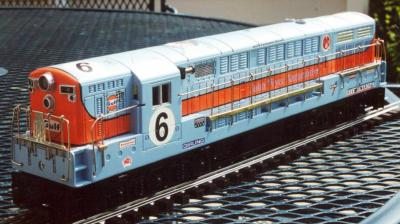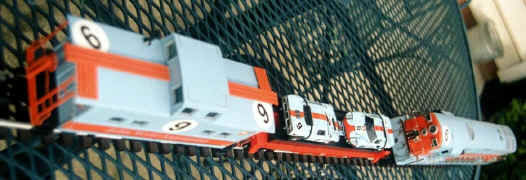|
Legal Notice
No material from Modeler Site any Web site owned, operated, licensed, or controlled by Damian Covalski may be copied, reproduced, republished, uploaded, posted, transmitted, or distributed in any way, except that you may download one copy of the materials on any single computer for your personal, non-commercial home use only, provided you keep intact all copyright and other proprietary notices. Modification of the materials or use of the materials for any other purpose is a violation of Damian Covalski's copyright and other proprietary rights.
Read More here > Legal notice
In the early sixties Henry Ford II tried to buy Ferrari to heighten Ford's exposure in world class sports car racing by winning the 24 Hrs. of Le Mans. Mr. Ferrari decided not to sell, so, Ford started it's own sports car racing program. Along with Eric Broadley of Lola Cars, John Wyer, working behind the scenes, also came onboard to help with what was to become the famous Ford GT40.
After two frustrating years in '64 and '65, Ford won the 24 Hr. race 1-2-3 in 1966 with the 427cu. in engined Mk.II. Ford won again in 1967 with the 427 cu. in. engined Mk. IV.
The sports car racing sanctioning body being, being tired of this trampling of the European manufacturers decided to ban the powerful 427 engine. Ford decided to withdraw since they had made their point.
John Wyer along with Gulf Oil sponsorship stepped in to take on the world with the GT40 powered by a Ford small block 4.9 liter engine. The rest as they say is history. John Wyer Automotive, first with Ford power in '68 and '69 then switching to Porsche for '70 and '71, was the team to beat in world sports car racing for the next four years.
JWA produced the most beautiful sports car ever (as far as I'm concerned) with the '68 & '69 GT40. GT40 chassis #1075 went on to win Le Mans in '68 as the #9 car and again in '69 as the #6 car in one the races closest finishes. This car, chassis #1075, is the inspiration for my JWA Train.
Ford GT40 chassis 1075 > Here
The "John Wyer Automotive"
The idea of the John Wyer Automotive train was born after I was passing through my hobby shop and found a O gauge Lionel flat car that was the same color orange that was on my 1/43 Gulf/Wyer race cars. These flat cars would be perfect for hauling them around.
I didn't want to haul them around with just any locomotive in just any freight train. I needed something special. I really love steam engines, but with what I had in mind they just didn't fit the scheme, so I turned to diesels.
One of the most classic and best looking diesels ever made is the Fairbanks Morse Trainmaster and I just happened to have one laying around just begging for a face lift. Mine was made by Williams. I ordered a caboose from Weaver and started drawing a paint scheme.
Making the scheme...
I decided to incorporate the paint scheme of my favorite racing car, the Gulf/Wyer GT40, chassis #1075. I ordered some custom decals (sadly the man no longer makes decals), black stripes from Champion Decals and matching paint from MCW Automotive Paints.
I started by stripping the paint from the loco body with regular brake fluid. When this was done and the body cleaned I sprayed it with a "Barrier" to keep any lacquers from attacking the plastic body. I then sprayed on one coat of gray primer followed by a coat of white paint.
I took the decal sheet and scanned it on my computer and then printed it in B/W on a sheet of white contact paper. A word of warning here, ink doesn't like the slick contact paper and will smear with any touch. I haven't tried this yet but you may try spraying the contact paper with Testor's Dull Coat to give the ink something to stick to.
I then cut very carefully around each B/W image on the contact paper. These will be used as masks for the white paint so that when the decal is applied the background paint won't seem to bleed through. This is a very important step with the thinness to today's decals. Before placing the decals on the white body, I used rubbing alcohol to take the ink off the paper, I didn't want that black ink on my white paint and besides it was only needed to see where to cut the masks.
After the masks were applied I painted over them first with another coat of white paint. This was to seal the edges of the masks to reduce any tendency for later colors to bleed under the edges.
That dry, on went the orange paint. I tried to keep the orange coverage limited to the area where it was needed. When that was dry I used contact paper to cover where I wanted the orange and again sprayed the edges with orange to seal the edges.
The blue went on next and after it was dry off came all of the masks. The contact paper will probably leave a sticky residue. This is very easily cleaned of with a product called "Goo Gone" and it didn't hurt the paint. I then used Floquil "Flat Finish" to get that smooth, clear, satin finish that the decals like.
Decals were applied, touchup was done and again the body was coated with "Flat Finish" to get that smooth satin finish that I prefer on models.
|
Let me digress here a bit and please don't hold this against me. I prefer a satin finish on a model to a very high gloss finish for the simple reason that it allows you to see your finished work. Very high gloss finishes are very neat looking and I truly commend those of you that can get that ocean deep look to a paint job. It's great on a real car, but to me it looks out of place on a model. Kind of like opening the hood on a "Hot Rod" and finding a fully chromed engine and it's surroundings, BLINDED BY THE LIGHT!. You can't see the details!!!
|
I then painted the headlight, class lights, number lights, window frames Testors silver paint from a bottle. One thing about using an enamel paint like this over a lacquer paint is that it can be easily cleaned off if a mistake is made. Also, if you have ever had that "Capillary Action" take place at the edge of what you are painting, the overflow can easily be scraped off with an X-Acto knife.
I used "Bare Metal Foil" on the dynamic brake fan grill and radiator fan screens to complement the chrome hand rails.
Conclusion
Talking with one of my engineers, the conversation turned to the types of engines we had never been able to run. I mentioned the F/M Trainmaster and he told me that you could stand at the front of the engine, the engineer could wind her up, knock off the brake and the engine would accelerate so fast that you couldn't get up on the rear of the engine. Now that's the kind of power I want hauling my race cars around!
I would like to thank Ric Keller for the custom decals and Dave Thompson for a nice try with the big numbers (the U.S. Mail lost them), so I learned how to make my own.
|

